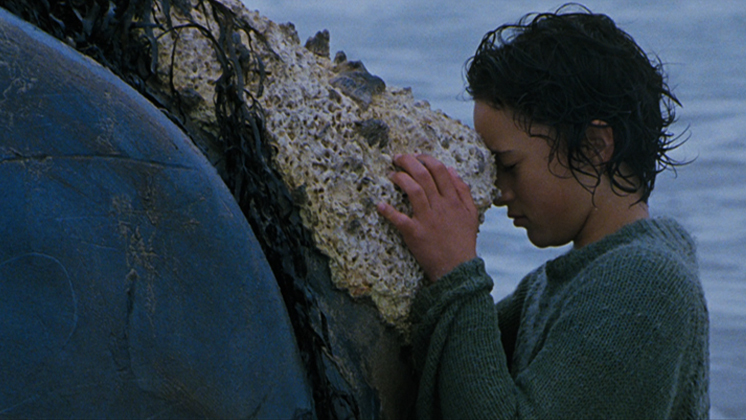Whale Rider is a drama filled story based in New Zealand where only males are allowed to become chiefs of the tribe. However the ancient custom is stopped when the child selected to be the next chief dies at birth. His twin sister, Pai (Keisha Castle-Hughes), survives and many of the men in the tribe are devastated. At the age of 12, she seeks help from her grandmother (Vicky Haughton) and the training of her uncle (Grant Roa) to claim her birthright. Directed by Niki Caro and was released on June 6th, 2003.
Narrative
A narrative is a fundamental way that we as humans make sense of the world; it is untimely how people create stories. When studying narrative, we look at three main terms: story, characters, and setting. In the Whale Rider, it is a re-told story of the 1000-year-old legend about the first ancestor named Paikea. The film is combining elements of history, traditions, and depicts them from a child. Pai, unlike her elders, does not look at the world in black and white, but she still continuously tries to please her Grandfather. The whale and the ocean become a massive part of the narrative because the entire plot surrounds the story about the ancestors. Genre “refers to the categorization of fiction films by the stories they tell or the ways they tell them” (Barsam, 2007, p. 29). Whale Rider is a family drama that follows the culture, struggles, and triumphs of the protagonist.
Character
Characters are the primary agents of cause and effect; their actions and desires drive the narrative. The film shows how even families in different cultures than others have personal problems, as Pai grows older, her rebel and independence begins to be more noticed as she evolves into a strong leader, she becomes interested in her tribes traditional songs, dances, and even Taiaha fighting, “a traditional stick fighting method used by the Maori men.” She truly believes that she can and will become the next leader of her tribe; she has a connection to the sea and the whales (ancestors). Pai is continually trying to prove herself, to her Koro (Grandfather), the boys in the tribe, and even the ancestors.

Pai’s primary goal is to prove that she can be the leader; she goes to great lengths to show Koro that she is worthy. She becomes rather talented in Tatiana fighting, and still, Koro does not think she can lead the people, he thinks that she is trouble to the tribe. Koro is a significant character in the film, and he helps move the narrative forward by being both an obstacle for Pai and someone who support’s her. Koro is the Chief of the Maori tribe, and the conflict between him and Pai is caused by Koro’s refusal to acknowledge Pai as the heir of the tradition, and she will end up being chief. No one can convince Koro that Pai is the natural heir.
The characters and the relationships are quite complex and make the narrative that much more interesting. The plot takes the viewer through the journey of the characters lives and as the audience we get to go through that journey with them. The fascinating character relationship is between Pai and Koro. The audience can see that Koro loves his granddaughter, but he is strongly disappointed that she is female.

The sea becomes a character in the movie, especially since the tribe believes that the whales are their ancestors. The audience can see that Pai has a relationship with the sea and that with the traditional chants she can have conversations with the ancestors better than any other character.

Pai’s biggest obstacle is trying to please Koro, and the viewer can see that his character does not take her seriously because she is a girl. There is an ongoing theme in the narrative that somewhat sexist, as well as, feminist. Pai is written off the moment she is born, being female is not worthy; however, Pai shows that she was born to lead and her gender does not make her less than one, she represents empowerment in the entire film.
Narrative Structure
The narrative structure uses many different ways, and in Whale Rider it is used to tell the story better. It is used to link the plot together using many different techniques including point of view, which bases on Pai because of her narrations. It is also linked together in scenes with of Koro, Nanny Flowers and Porourangi all having conflicts and eventually linking the story together. There are three main parts to the plot that tells the story, and they all come together by Pai’s narrations and the big turning points in the story. Point of view is used exceptionally well and powerful in this film, when Pai is narrating the music blends together and moves the movie in a beat sequence. The viewer saw much of the conflict in the film, and it was an essential part of the movie, making up the main storyline and forming a plot which carried on right to the end of the film.
Finally, Whale Rider was a powerful film that shows cultural struggles, sexism, masculism/feminism, and a family that comes together. Pai goes through a journey to get to her primary goal, prove Koro she is worthy and become the leader of her people.